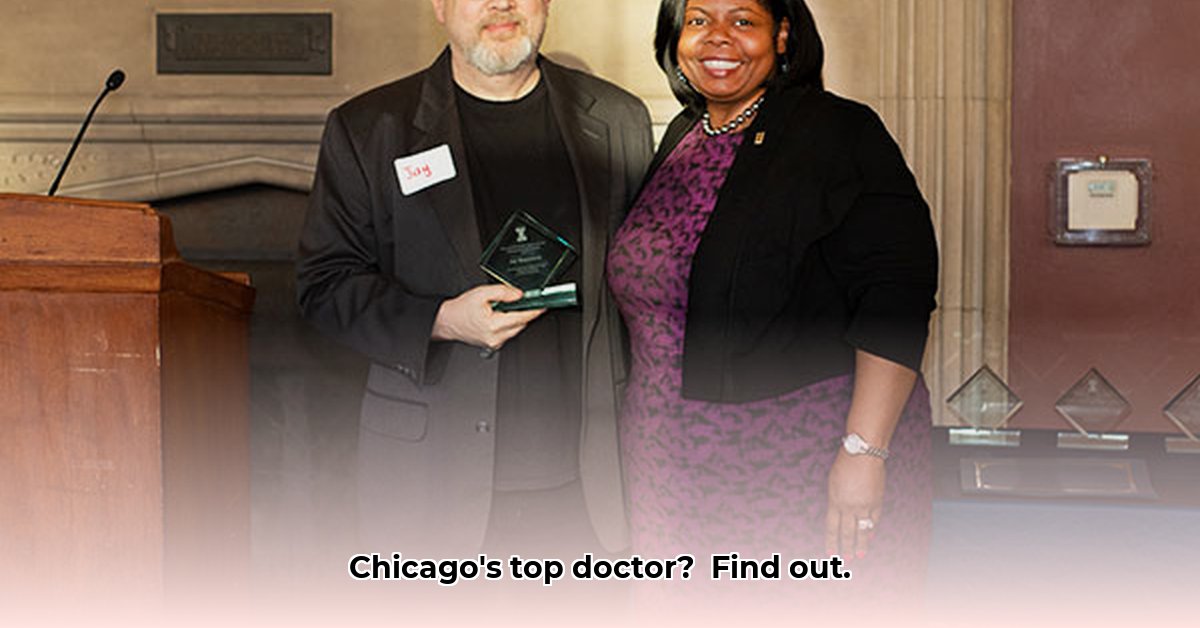
Dr. Gregorio Rosenstein: A Case Study in the Evolution of Internal Medicine Practice in Chicago
Dr. Gregorio Rosenstein represents a Chicago medical institution. For over 40 years, he's provided trusted care, building a reputation on expertise and personalized attention. However, his long career offers a valuable lens through which to examine the evolving challenges and opportunities facing established internal medicine practices in a large urban setting. This case study analyzes Dr. Rosenstein's practice, exploring the factors that contribute to its success and the significant hurdles he faces in today's healthcare landscape. For more on healthcare challenges, see this useful resource.
Practice Overview: A Legacy Built on Trust
Dr. Rosenstein's four-decade career is a testament to his dedication. His affiliations with Loyola Medicine, Presence Resurrection Medical Center, and Community First Medical Center highlight his credibility and access to extensive resources. This extensive experience fosters patient trust. However, even a renowned practice faces evolving challenges.
Dr. Rosenstein accepts a broad range of insurance plans, including Medicaid, Medicare Advantage, Aetna, BCBS, Molina, and Cigna. Crucially, however, he is currently not accepting new patients. Additionally, his practice is not affiliated with Humana, a major insurer in Chicago. This raises questions regarding patient access and the sustainability of the practice model. Is this a strategic decision to focus on existing patients, a reflection of capacity limitations, or a consequence of insurance reimbursement rates? Likely, it's a combination of factors. Whatever the case, it restricts access to care, particularly for Humana insured patients, underscoring a critical issue in the modern healthcare system: balancing high-quality care with broad accessibility.
Analysis: Navigating the Complexities of Modern Healthcare
Many factors contribute to the challenges faced by established practices like Dr. Rosenstein's. These include:
- High Patient Volume: Managing a substantial patient volume requires significant resources and staff. The administrative burden associated with managing patient records, insurance claims, and communication can overwhelm practices.
- Strategic Choices: The decision to not accept new patients could be a strategic move to maintain quality of care for existing patients. Focusing on a smaller patient load allows Dr. Rosenstein to deliver more personalized attention.
- Insurance Reimbursement Rates: Negotiating favorable reimbursement rates with insurance providers is crucial for the financial health of any practice. The complexity of these negotiations, and low reimbursement rates from certain insurers, can significantly impact practice viability.
These challenges affect patient access and practice sustainability. Dr. Rosenstein’s experience highlights the ongoing tension between providing high-quality care and managing the financial pressures of modern healthcare. The restrictions on new patient intake and the lack of Humana network participation directly impact patients' ability to access his services.
Stakeholder Analysis: A Multifaceted Perspective
The situation affects various stakeholders:
| Stakeholder | Short-Term Goals | Long-Term Goals |
|---|---|---|
| Dr. Rosenstein | Assess practice efficiency; Explore telehealth options; Consider additional staff. | Plan for succession; Potentially consider an associate physician or phased retirement. |
| Loyola Medicine & Affiliates | Negotiate improved Humana contracts; Advocate for fair reimbursement. | Improve network participation strategies across affiliated physicians; Explore innovative payment models. |
| Humana-insured Patients | Find alternative in-network providers; Advocate for wider network access. | Encourage transparency and accountability from Humana regarding network participation. |
| Healthcare Payers (Insurers) | Re-evaluate reimbursement structures; Offer incentives for primary care physicians. | Invest in addressing provider shortages; Support initiatives to improve primary care access. |
Risk Assessment and Mitigation Strategies
Several risks exist if the status quo remains: lost patients to more accessible options, reduced community access to care, and potential health disparities. Mitigation strategies include:
- Investing in practice efficiency: Implementing technology solutions to streamline administrative tasks.
- Exploring telehealth options: Expanding reach and convenience for existing patients.
- Enhanced communication: Improving communication with patients and insurance companies to mitigate misunderstandings and payment issues.
- Negotiating with Humana: Actively pursuing a contract with Humana, or at a minimum, a more open dialogue, to facilitate access for insured patients.
- Strategic workforce planning: Recruiting additional support staff to ensure efficient operations, possibly transitioning to a model with an associate physician.
Regulatory Considerations: Compliance and Ethical Practice
Dr. Rosenstein's practice operates within a strict regulatory environment. Strict adherence to HIPAA, Medicare/Medicaid regulations, and state licensing requirements is mandatory. The complexities of payer networks and potential antitrust issues related to network participation must be carefully considered. Maintaining compliance is crucial for the practice’s ongoing success.
Conclusion: Lessons for the Future of Internal Medicine
Dr. Rosenstein's practice offers valuable insights into the challenges and successes of long-established internal medicine practices. The evolving healthcare landscape demands adaptability, strategic planning, and a focus on both delivering high-quality care and ensuring practice sustainability. Addressing these issues benefits both individual practices and the broader community's access to quality healthcare. The future will depend on navigating these complex and interconnected factors effectively.